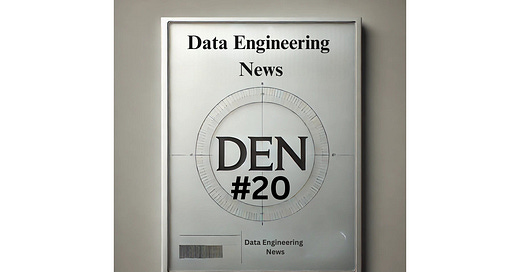1. Governance Risk & Compliance: Essential Strategies
"How can organizations effectively balance governance, risk, and compliance (GRC) to drive resilience and regulatory success?”
Josh Howard wants to say that AI is revolutionizing industries, but can it be truly safe without governance, risk, and compliance? As AI integrates deeper into business, organizations must navigate privacy risks, bias, IP security, and transparency. The article explores why AI governance is not just a legal necessity but a business imperative—helping companies avoid pitfalls while maximizing AI’s potential.
https://www.databricks.com/blog/governance-risk-compliance-essential-strategies
2. How to Implement Write-Audit-Publish (WAP)
"How can organizations effectively implement the Write-Audit-Publish (WAP) pattern to ensure data integrity and compliance?”
The author, Robin Moffatt, wants to say in this blog that implementing the Write-Audit-Publish (WAP) pattern is key to ensuring data integrity and quality. But how do you choose the right tool? This article breaks down WAP implementations across Apache Iceberg, Hudi, Delta Lake, lakeFS, and Nessie, highlighting their strengths and limitations.
https://lakefs.io/blog/how-to-implement-write-audit-publish/?utm_source=chatgpt.com
3. DuckDB Ecosystem: February 2025
"What are the latest advancements in the DuckDB ecosystem this February 2025, and how can they enhance your data workflows?"
The author, Simon Späti, discusses that DuckDB is evolving fast, and this February brings major advancements. From new SQL features like UNION ALL BY NAME to real-time data processing with Debezium, the ecosystem is growing in ways that redefine modern analytics. This article covers key highlights from DuckCon #6, performance benchmarks, and how DuckDB is integrating with Databricks, MotherDuck, and Apache Arrow Flight.
https://motherduck.com/blog/duckdb-ecosystem-newsletter-february-2025/
4. What is dlt+ Cache?
A portable compute layer for developing, testing, and validating transformations - before they hit production.
The author wants to say that dlt+ Cache is the missing development layer for data engineers, finally bringing staging environments, instant feedback loops, and cost-effective testing to data workflows. Why wait on slow warehouse queries and burn cloud credits just to check a basic fix? This article explores how dlt+ Cache enables fast, local execution for data transformations, schema validation, and debugging, all before hitting production.
5. Moving Data with Python and dlt: A Guide for Data Engineers
"How can Python and dlt simplify data movement and transformation for data engineers?"
The author wants to discuss that moving data is not just about transfer—it’s about control, efficiency, and scale. Python and dlt make it possible to extract, transform, and load data seamlessly from APIs, databases, and cloud storage—without the overhead of legacy tools. This guide walks through building robust ELT/ETL pipelines, handling schema changes, and optimizing workflows to reduce cloud costs.
https://www.datacamp.com/de/tutorial/python-dlt
All rights reserved Den Digital, India. I have provided links for informational purposes and do not suggest endorsement. All views expressed in this newsletter are my own and do not represent current, former, or future employer opinions.




